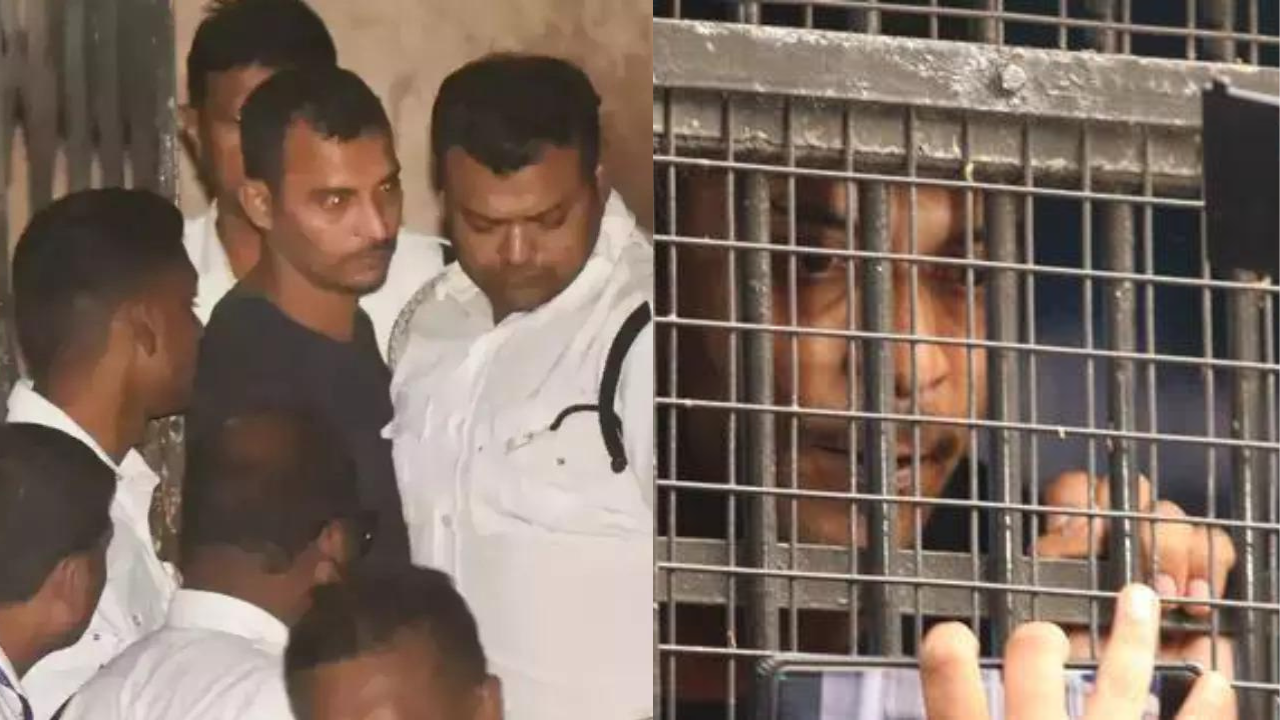Kolkata Doctor Murder: CCTV Footage and Saliva Evidence Seal Fate of Convicted Killer
In a gripping case that sent shockwaves through Kolkata, Sanjay Roy's conviction for the rape and murder of a 31-year-old resident doctor highlights the chilling efficiency of modern forensic science. This article delves into the key pieces of evidence that sealed Roy's fate, taking you step-by-step through the investigation that led to his life imprisonment. Prepare to be amazed by the power of CCTV, the unerring accuracy of DNA analysis and the relentless pursuit of justice.
The Damning CCTV Footage: A Silent Witness to a Crime
The first piece of incriminating evidence came in the form of CCTV footage from RG Kar Medical College and Hospital’s chest department. While the actual crime scene wasn't captured by the camera, a specific frame caught Roy leaving the hospital at 4:31 AM on August 9th. He's clearly seen in the recording holding a helmet, yet without his Bluetooth earphones, a minor detail that ended up playing a major role. Roy admitted during his trial that he was present in the chest department from 4:03 AM to 4:31 AM, a fact the judge used to pinpoint his location near the crime scene at the critical time.
A Crucial Admission and Conflicting Claims
Even when faced with a myriad of questions, Roy responded with “I can’t say” to a whopping 56 out of 104 questions, a defensive strategy that ultimately backfired. However, his admission to being present in the chest department became an undeniable nail in the coffin. This admission, made even after a formal caution about potential consequences, served as a significant piece of evidence for the prosecution, irrefutably placing him at the crime scene around the time of the murder.
His claim to have been visiting a fellow civic volunteer was easily debunked because of his failure to identify the supposed patient or to provide verifiable proof of his presence in the male ward, a testament to the precision of the judge's scrutiny during the trial.
The Science Speaks: Saliva Evidence Links the Accused to the Victim
Beyond the CCTV evidence, another piece of irrefutable evidence secured Roy's conviction—the presence of his saliva on the victim's body. His defense attempted to explain this away by claiming it was planted during police custody. Yet, Judge Das decisively dismissed this claim, highlighting the simple fact that the victim had been cremated before Roy was taken into custody on August 10th. The fact that this evidence could not be fabricated points towards an airtight investigation.
Scientific Analysis vs. Fabricated Accounts
Adding to this layer of irrefutable proof was a thorough forensic examination that undermined the accused's claims about his facial injuries being sustained during boxing practice. Experts were unequivocal that these were scratch marks and not the kind of injuries caused by blunt trauma typical of boxing. The defence attempts to manipulate the narrative did not stand against the scientific consensus of the case, making it even more credible and powerful for the prosecution's case.
The Judge's Verdict: A Testament to Justice Served
In a 172-page judgment, Additional Sessions Judge Anirban Das highlighted Roy’s incriminating admission and how his failure to provide sufficient defense ultimately reinforced the strength of the prosecution's case. This case underlines the critical role of forensic science in ensuring convictions and ensuring justice prevails, showing the powerful effect that proper legal investigations can have on solving crimes such as murder.
The Importance of Forensic Integrity
This trial stands as a strong case for meticulous evidence gathering and judicial scrutiny. It also demonstrates the devastating effects of trying to obscure or evade the truth, underscoring how meticulously gathered and irrefutable forensic evidence can play a critical role in ensuring that the scales of justice tilt towards the truth. This was clearly a comprehensive study and highlights the commitment of legal teams towards proper investigation and fairness in cases of serious crime.
Take Away Points
- The CCTV footage provided irrefutable evidence placing Roy at the hospital at a critical time.
- His admission of presence, despite contradicting claims, turned out to be a critical factor in the judgement.
- Saliva evidence and forensic analyses disproved defense arguments conclusively.
- The judge's well-reasoned verdict highlights the effective role forensic evidence plays in successful prosecutions.









